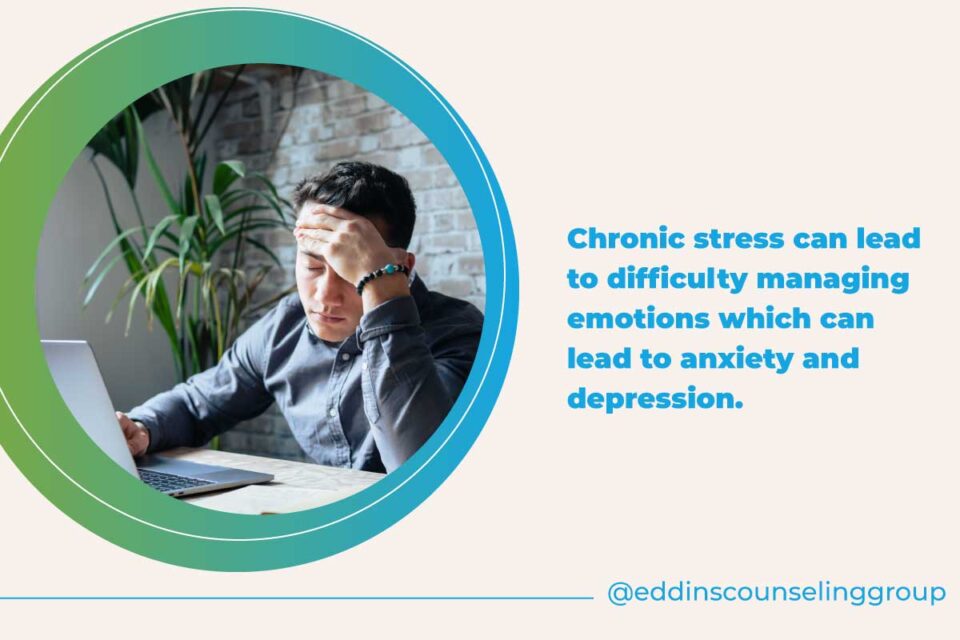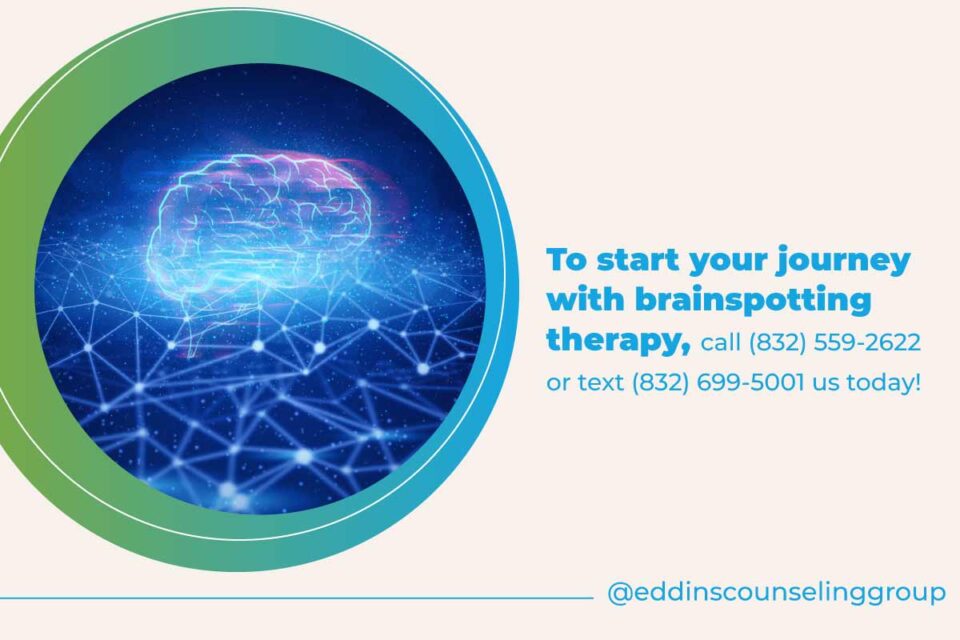June 19, 2023
The Science Behind Brainspotting Therapy
Written by Guest Author
Posted in Trauma, Grief & Loss and with tags: PTSD/Trauma, brainspotting

Brainspotting therapy is a relatively new technique that involves identifying and focusing on certain points in the brain to release emotional trauma and promote healing.
By understanding the underlying neurological mechanisms, we can fully appreciate the science behind brainspotting therapy and its potential to revolutionize mental health treatment.
What is Brainspotting Therapy?
Brainspotting is a therapeutic technique developed by Dr. David Grand in 2003. It is based on the idea that our visual field can lead us to the source of emotional and physical pain in the body.
- The therapist first identifies a “brainspot,” a specific point in the client’s visual field that is linked to the emotional or physical distress.
- Then, the client focuses on that spot while the therapist guides them through the healing process.
While brainspotting is a relatively new technique, it has quickly gained popularity due to its effectiveness in treating various mental health conditions.

The Brain and Trauma
Trauma affects the brain in many ways.
When we experience a traumatic event, our brain’s amygdala, the region responsible for processing emotions, goes into overdrive.
This results in a fight, flight, or freeze response, which can lead to long-term physical and emotional consequences.
Chronic stress can also lead to changes in the hippocampus, the region responsible for memory formation and emotional regulation.
This can cause a person to have difficulty managing their emotions, leading to symptoms of anxiety and depression.
It is essential to understand the role of the brain in trauma to fully appreciate how brainspotting therapy can help individuals overcome their emotional and physical pain.
What is Brainspotting?
The main goal of brainspotting therapy is to release emotional trauma stored in the body’s nervous system.
- The therapist identifies a “brainspot,” which can be a specific point in the client’s visual field or a physical sensation.
- The client then focuses on that spot while the therapist guides them through the healing process.
One of the unique benefits of brainspotting therapy is that it can bypass the client’s conscious mind, allowing them to access their unconscious mind’s deeper levels.
This can lead to a release of emotional trauma that a person may not be aware of consciously.
Brainspotting therapy can help individuals overcome a wide range of emotional and physical issues, including anxiety, depression, PTSD, chronic pain, and eating disorders.

Benefits of Brainspotting Therapy
There are many benefits to brainspotting therapy. Here are a few examples:
- Relief from Trauma Symptoms: Brainspotting therapy can help individuals overcome the emotional pain associated with trauma and PTSD. The therapist can guide the client to release stored traumatic memories and emotions, leading to a decrease in symptoms.
- Improved Emotional Regulation: By releasing emotional trauma stored in the body, individuals can improve their emotional regulation and learn to manage their emotions more effectively.
- Decreased Anxiety and Depression: Brainspotting therapy has been shown to help individuals reduce their symptoms of anxiety and depression. By accessing the unconscious mind’s deeper levels, brainspotting therapy can help individuals overcome deep-seated emotional issues that may be contributing to their symptoms.
- Increased Self-Awareness: By guiding clients to focus on specific points in their visual field, brainspotting therapy can increase self-awareness and help individuals connect with their inner selves.
Who Can Benefit from Brainspotting Therapy?
Brainspotting therapy can be beneficial for individuals struggling with a wide range of mental and emotional issues.
Here are a few examples:
- People with PTSD: Brainspotting therapy has been shown to be effective in treating PTSD symptoms. By releasing stored traumatic memories and emotions, individuals can overcome the emotional pain associated with trauma.
- People with Anxiety and Depression: Brainspotting therapy can help individuals reduce their symptoms of anxiety and depression. By accessing the unconscious mind’s deeper levels, brainspotting therapy can help individuals overcome deep-seated emotional issues that may be contributing to their symptoms.
- People with Chronic Pain: Chronic pain can often be linked to emotional trauma. By releasing stored emotional trauma, brainspotting therapy can help individuals reduce their chronic pain symptoms.
- People with Eating Disorders: Brainspotting therapy can help individuals overcome the emotional pain associated with eating disorders. By accessing the unconscious mind’s deeper levels, individuals can release stored emotions and learn to manage their eating disorder symptoms.

Conclusion
Brainspotting therapy is an innovative form of therapy that has the potential to revolutionize mental health treatment.
By understanding the underlying mechanisms of the brain and trauma, we can fully appreciate how brainspotting therapy can help individuals overcome emotional and physical pain.
As the field of neuroscience continues to evolve, we can expect to learn more about the science behind brainspotting therapy and its potential applications for mental health treatment.
Despite being a relatively new technique, brainspotting therapy has shown promising results in treating various mental health conditions, offering hope to those struggling with emotional and physical pain.
To get started with one of our Houston, Montrose, or Sugar Land therapists, give us a call at (832) 559-2622.
Grounding & Self Soothing
Get instant access to your free ebook.
















